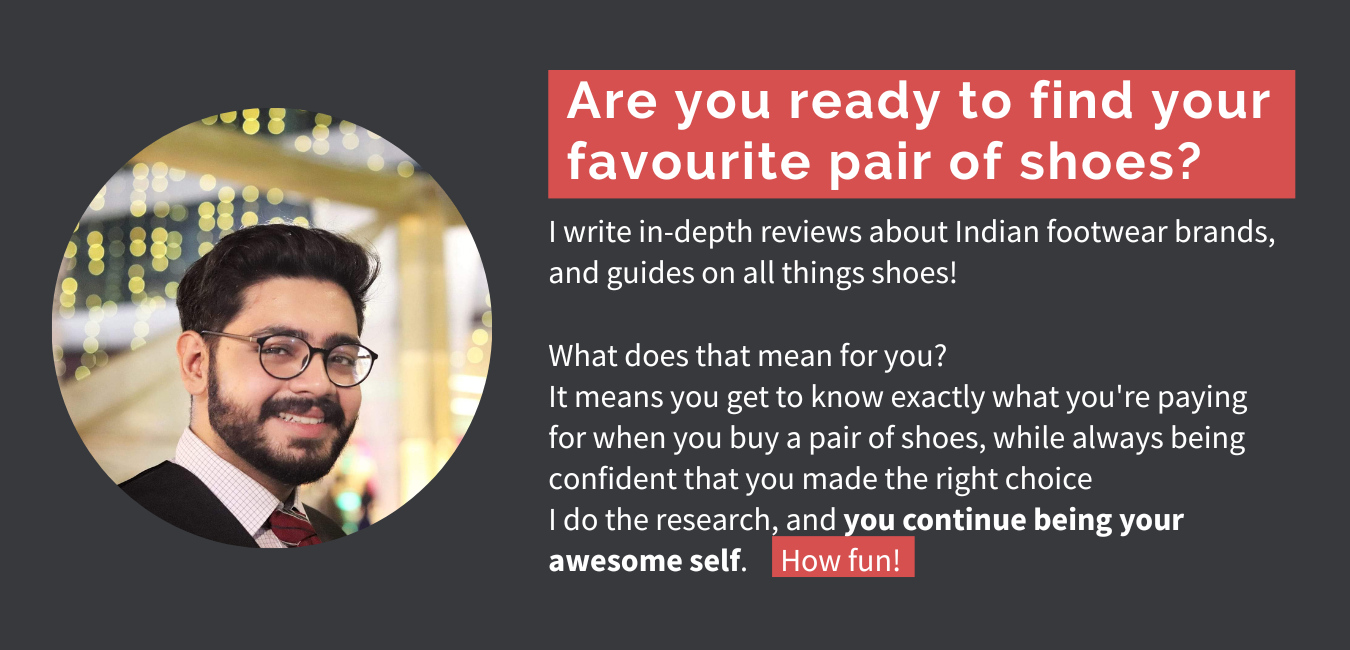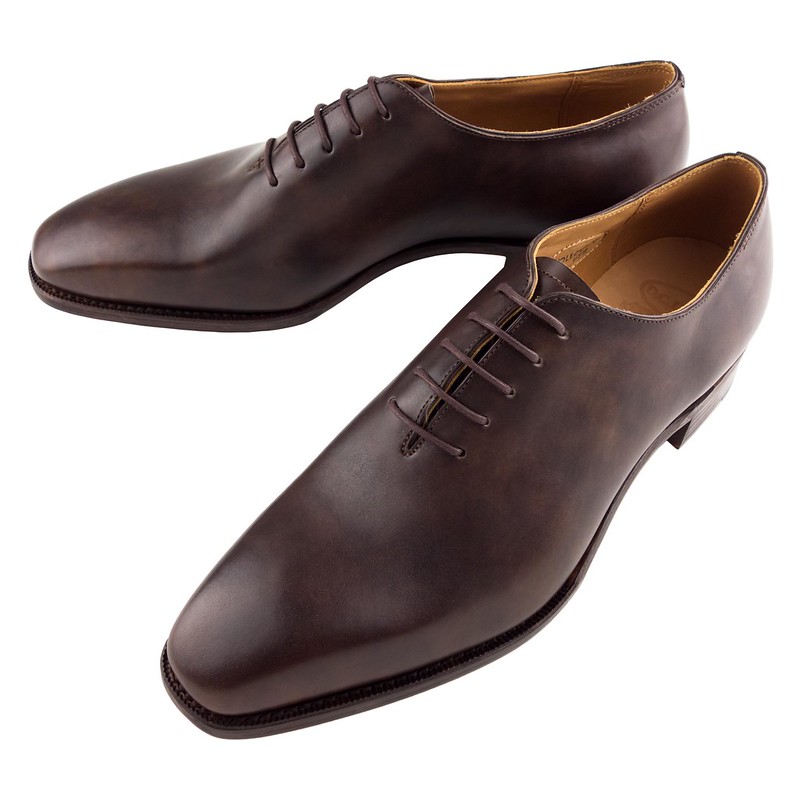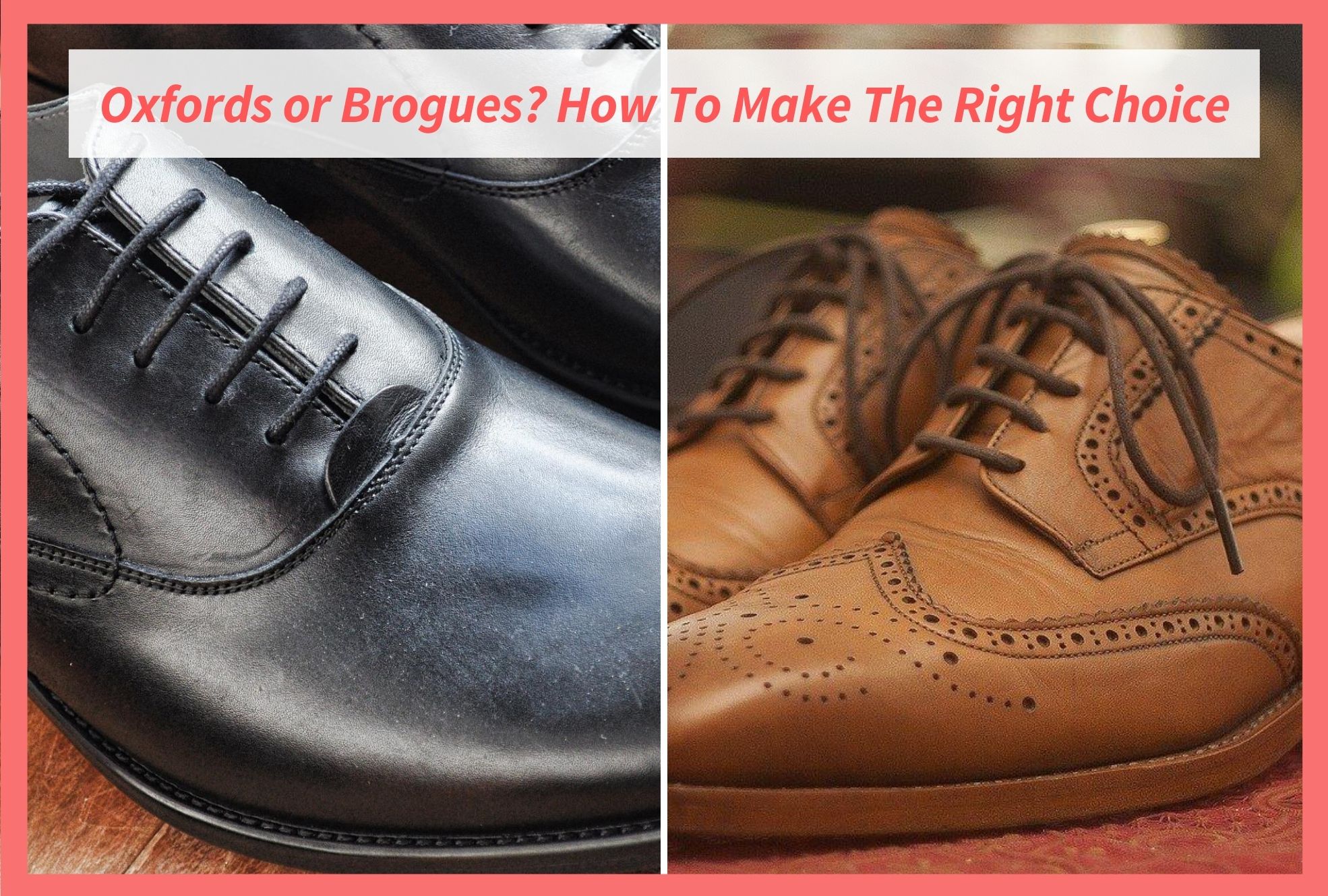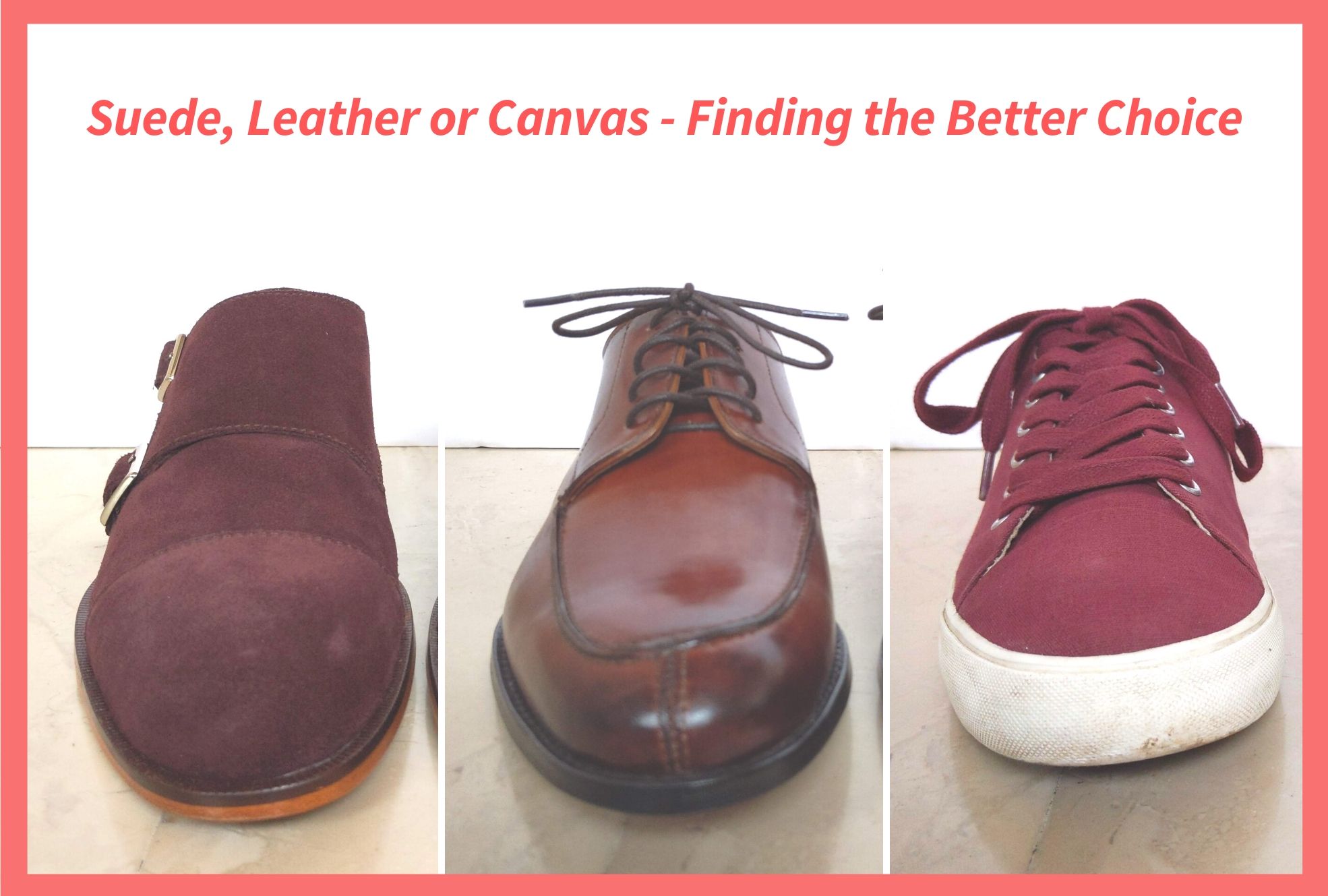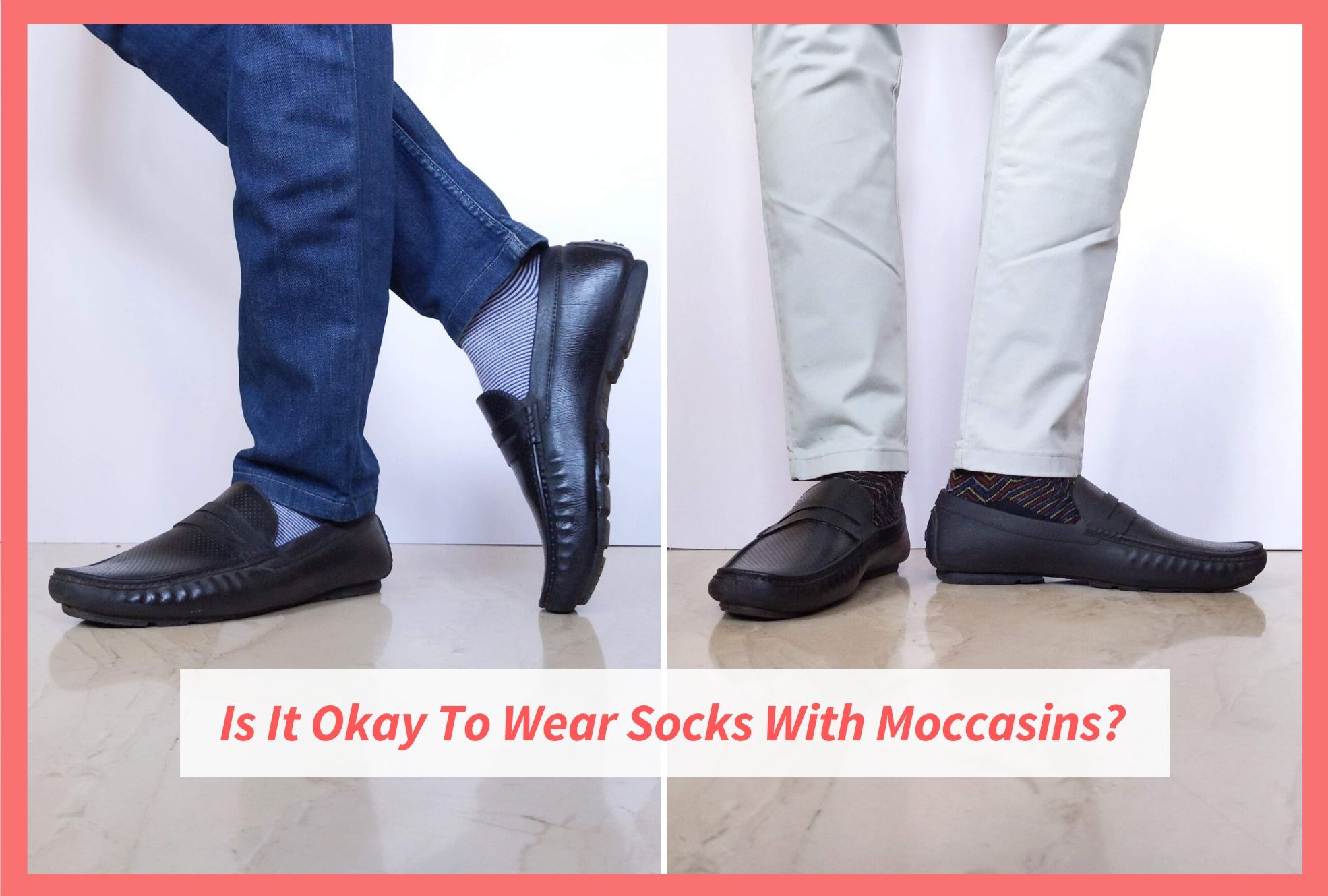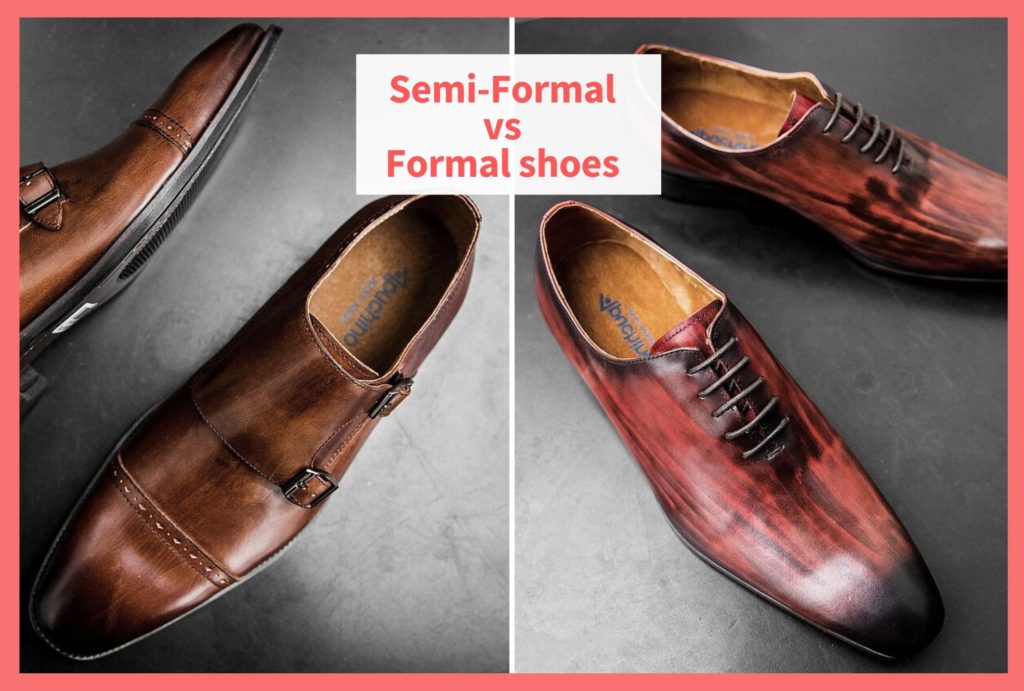
When it comes to casual shoes, it is not very tricky to differentiate them from formal shoes. There are 5 simple factors, and once you’ve understood them then you can identify the correct category by yourself
Semi-formal shoes are whole another ball game though.
They are not casual shoes, but they aren’t formal either
But wait, the word ‘formal’ is right there!
Okay yes, it is a subset of formal shoes.
Is it, though? *smirk*
For a second there, the folks who already knew about semi-formal shoes must’ve forgotten too 😛 I promise, the rest of this post will not be as confusing
Semi-formal shoes are basically dressed down formal shoes. So, if you rank dress / formal shoes on a scale from the most formal to the least – on the lower end of that scale would be semi-formal shoes. There are just 4 key differences between formal and semi-formal shoes: the level of decoration on the shoe, the presence of shoelaces, the colour of the leather, and the sole material. These will help you decide if a pair of shoes is appropriate for an event, depending on whether the event is formal or semi-formal
For e.g. the more patterns on a shoe, the less formal it is. We’ll be going into all of these differences below. There’s also some bonus info towards the end, so stay tuned. Soon you’ll be able to point out semi-formal shoes even in your sleep 😉
Difference Between Formal And Semi-Formal Shoes
Like I’ve said before, formality is a spectrum. While there is a sort of demarcation between formal and casual shoes, the line becomes blurry as you move towards the formal side
These 4 tips will tell you the factors that reduce the formality of a dress shoe. If a pair of shoes cannot be worn for the top 3-4 dressiest occasions, then they are semi-formal
Let’s get started:
#1: Amount Of Decoration / Patterns
Decoration / Patterns refer to three things in case of a pair of dress shoes:
- Toe Detail (Cap toe vs Plain toe vs Split toe)
- Brogueing
- Ornaments (for loafers – horse-bit, tassels)
Toe Detail
The toe detail depends on the pieces of leather that were used to make the shoes. Wholecut shoes are beautiful shoes where a single piece of leather is used to construct the shoe. This makes them usually expensive, and also the most formal
For a plain toe, 2 pieces of leather are joined together so there is no detailing on the shoe, whereas a cap toe has an additional piece of leather stitched over the toe forming a cap shape on it
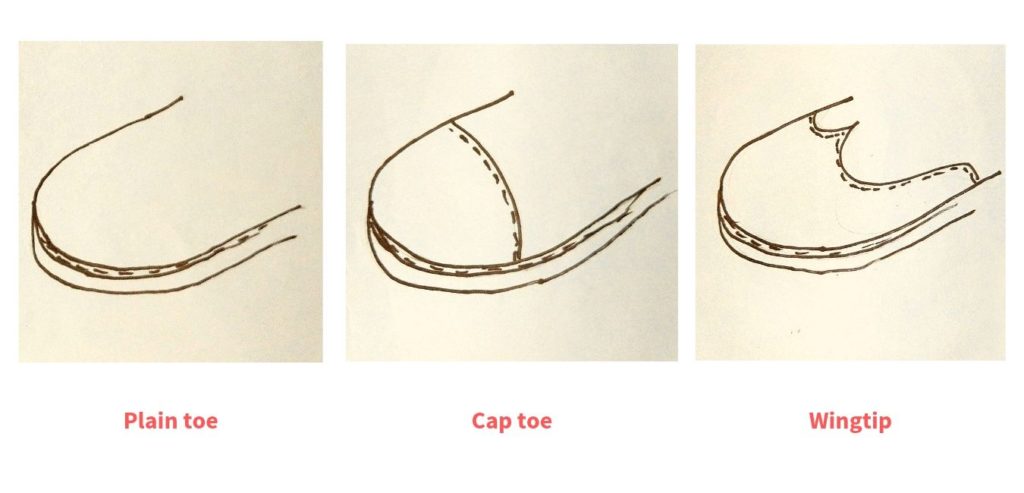
Both plain and cap toes are at the same level of formality, and you can still wear them with suits. This is followed by apron toe and split-toe shoes, which are the least formal and usually reserved for loafers
Brogueing
Brogueing is the act of making tiny holes / perforations on different sections of the shoe. Originally they had a function – the wearers worked in marshy lands and the holes made sure that their shoes dried up faster. Over time, that function has been lost and now, these holes are purely decorative
Based on the extent of brogueing brogues are of four types, from the most detail to the least: Full-brogues / wingtips, longwing brogues, half-brogues, and quarter-brogues




Higher the amount of brogueing, lower the formality of the shoe. So a pair of quarter-brogues are suitable to wear with suits, but full-brogues are not.
Full brogues / Wingtips, although extremely popular with men all around the world, are best reserved for semi-formal or casual occasions
You might see brogues being referred to as a separate style of shoe, but in reality, they are not. Any dress shoe from oxfords to loafers can be called brogues if brogueing is present.
Ornaments
Penny loafers have the distinct slit on the vamp (also used to keep pennies in the earlier days, hence the name)
Tassel Loafers show the presence of tassels i.e. knotted pieces of leather used to decorate the vamp of the shoe. And Horse-bit loafers have the signature metal strip made famous by Gucci.
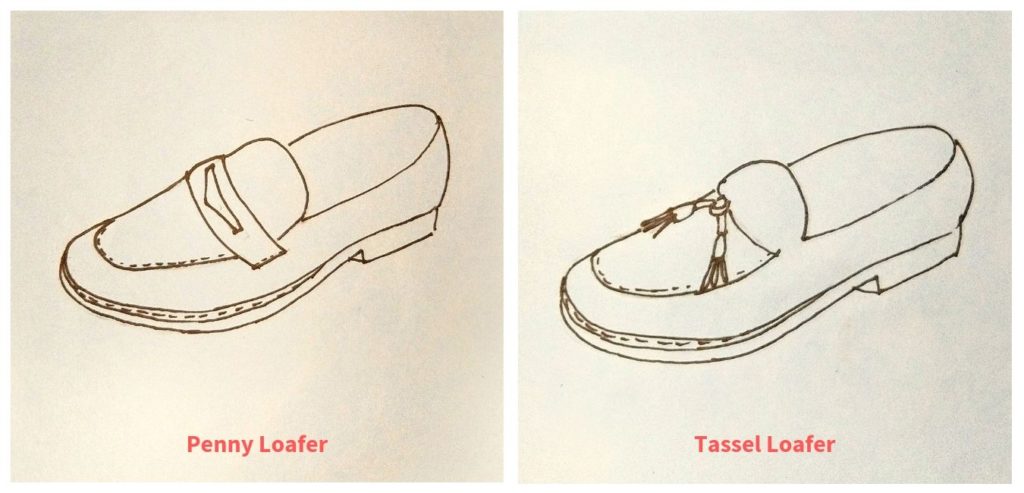
Both of these are additional details that skew a pair of shoes towards the semi formal side
#2: Presence Of Shoelaces
The most formal shoes will have shoelaces, specifically in a closed lacing system like the oxfords.
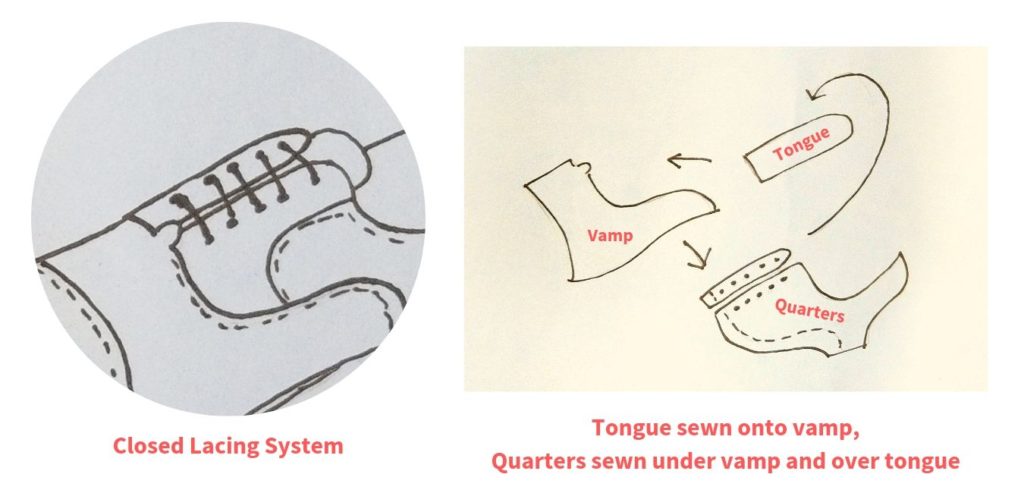
Open laced derbies are less formal than oxfords but can still be paired with blazers, sports jackets and other pieces of daytime or evening formal wear
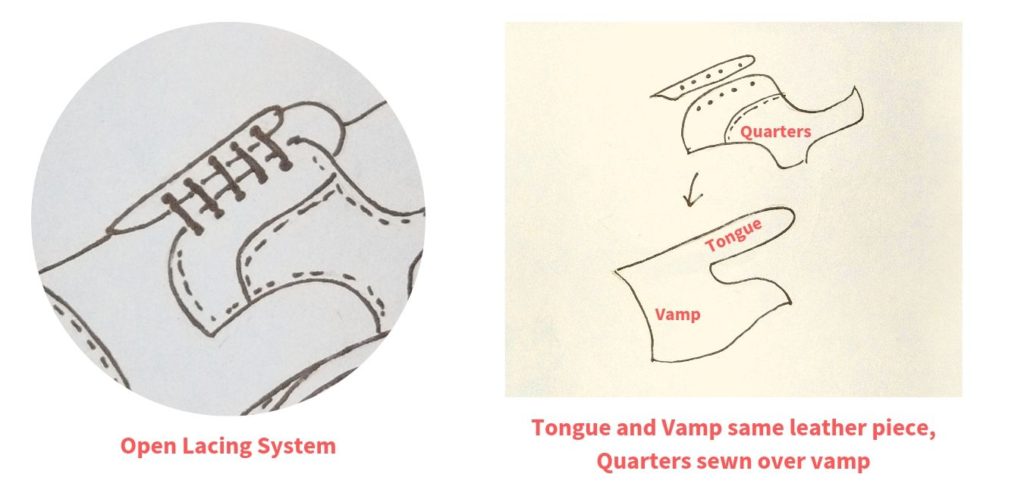
Monk straps, even though without any lacing system, still has the straps used for fastening which bring them next in line in terms of formality
And finally, we have slip on Loafers and Chelsea boots that are semi-formal due to the absence or a lacing or fastening system
#3: Colour
Black is the most formal colour when it comes to dress shoes, followed by other dark colours like brown and oxblood
There are so many shades to choose, but the rule of thumb is that bright / light colours and semi-formal and dark colours are formal
Tan is a good example : it is not formal enough to wear with a full suit, but dressed outfits without the jacket and tie could still work with tan coloured shoes under the right setting
Recently I’ve seen navy / blue shoes as well. I find them exciting and interesting – have been looking to buy a pair of dark blue oxfords for a while now – and would rank dark blues to be more formal than tan, while lighter and vivid blues less formal than tan
Maybe it’s because shades of brown / red have been more commonly used for dress shoes in the beginning; any other colour feels a little less formal even if it is dark
Spectator shoes are semi-formal, and are the only example I know of white being used in dress shoes
#4: Sole Material
As a rule: Leather soles are the most appropriate for highly formal events, while anything that is not leather is semi-formal and for other casual situations. This is because leather soles will have a sleek profile and are usually cut close to the shoe, which makes them subtle and elegant
Rubber or non-leather soles are usually chunkier and thicker which puts them lower in formality
The question here, though, is identification. While the other differences we discussed are noticeable from a distance, the shoe soles are not. A well made rubber-soled shoe might look the same as a leather-soled shoe unless very closely expected. So you might get away with it 🙂
Remember this as a point of difference between formal and semi-formal shoes, but don’t bother too about it. If non-leather soles work best for you, then go ahead and wear them – it should be okay!
[BONUS GUIDE] Various Formal Shoes Ranked In Formality
The below table has various dress shoes ranked from formal to semi-formal.
You can order the table in reverse rank by clicking on the rank column, and click on the shoe to skip to the relevant section
1. Plain-toe oxfords in patent black leather
Patent leather is that really shiny kind of leather that looks almost plastic (but is not). It has just been treated to give off the shine
Patent black leather oxfords are the dressiest shoes you can own
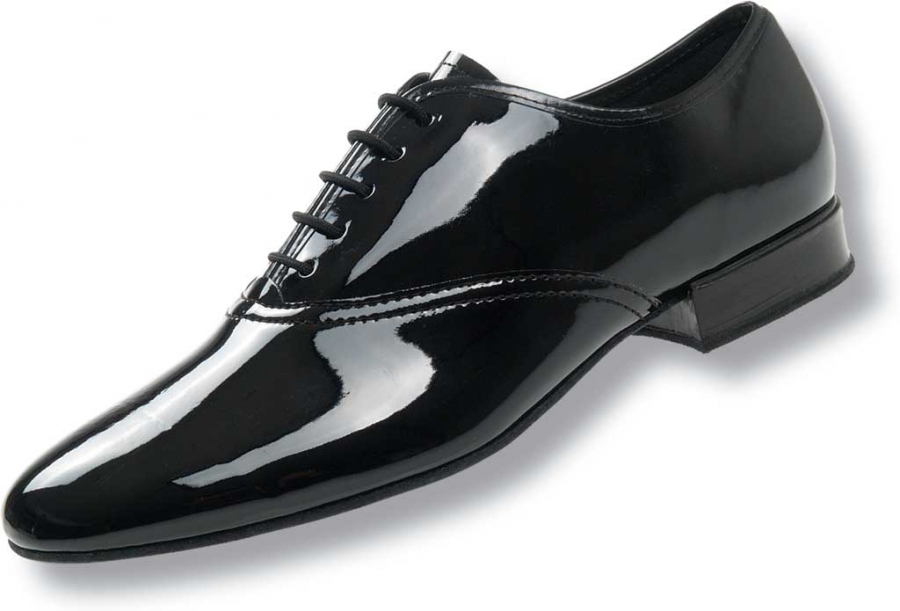
WEAR THEM WITH: A tuxedo for black-tie and white tie-events. Most people don’t regularly attend such high formal events, but if you do then these are a must-have
DON’T WEAR THEM WITH: Full suits or blazers that are not tuxedos.
DEFINITELY DON’T WEAR THEM WITH: Chinos, or jeans. Please, no. You’re not Ranveer Singh
2. Wholecut Oxfords in Black / Dark Brown / Oxblood
Wholecut shoes, like mentioned earlier, are highly formal.
Some would say that Plain / Cap-toe Oxfords are dressier than these but I still like to follow the “less is more” rule for formality, which makes these more formal due to their simple design
WEAR THEM WITH: Full-suits. Choose the colour of the shoe to match with the suit
DON’T WEAR THEM WITH: Anything that is casual
3. Plain-toe / Cap-toe Oxfords in Black / Dark Brown / Oxblood (Quarter brogueing is okay)
We’re still in the very formal end of the scale, but this is where the majority of people will start from – including me. The tiny scope to allow for quarter brogueing keeps things interesting
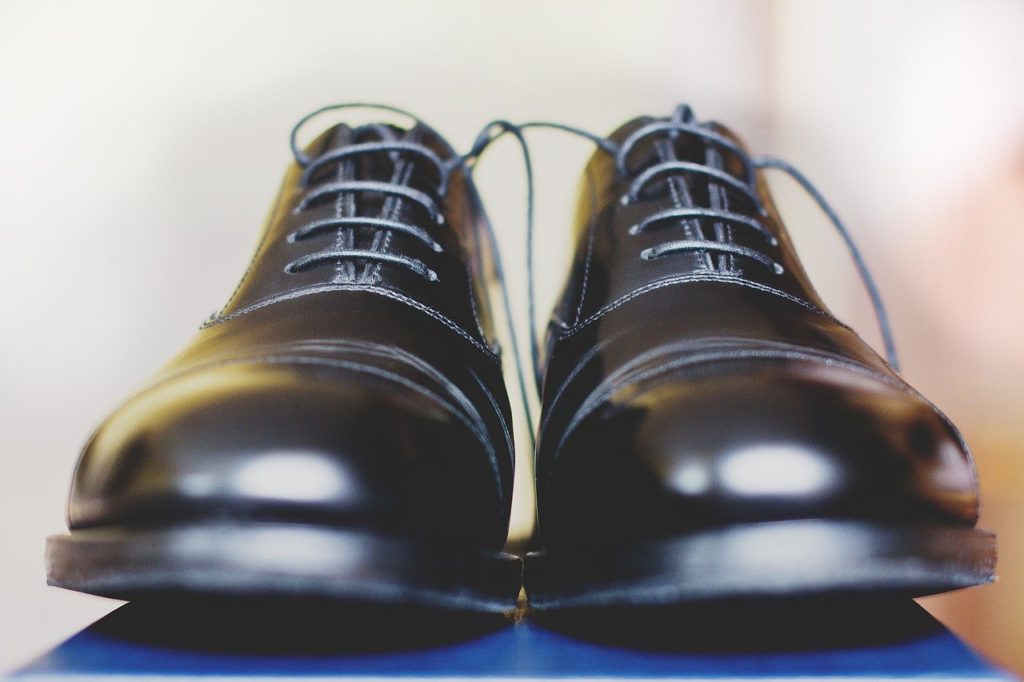
The reason why I’ve kept both Plain-toe and Cap-toe at the same level, is because honestly it depends on personal preferences. Some might prefer a plain-toe and others might enjoy a cap-toe
WEAR THEM WITH: Full-suits just like the Wholecuts, or nice dress pants without the suit jacket. I would also go ahead and say that this is appropriate for daily office wear as well
DON’T WEAR THEM WITH: Jeans. While it might be okay to wear these with chinos, I wouldn’t recommend it
4. Plain-toe / Cap toe Derbys (Quarter brogueing is okay)
Ah, Derbys! For those that don’t know about oxford shoes, these are definitely THE dress shoe of choice. Not a bad thing at all, for Derbys have their own charm
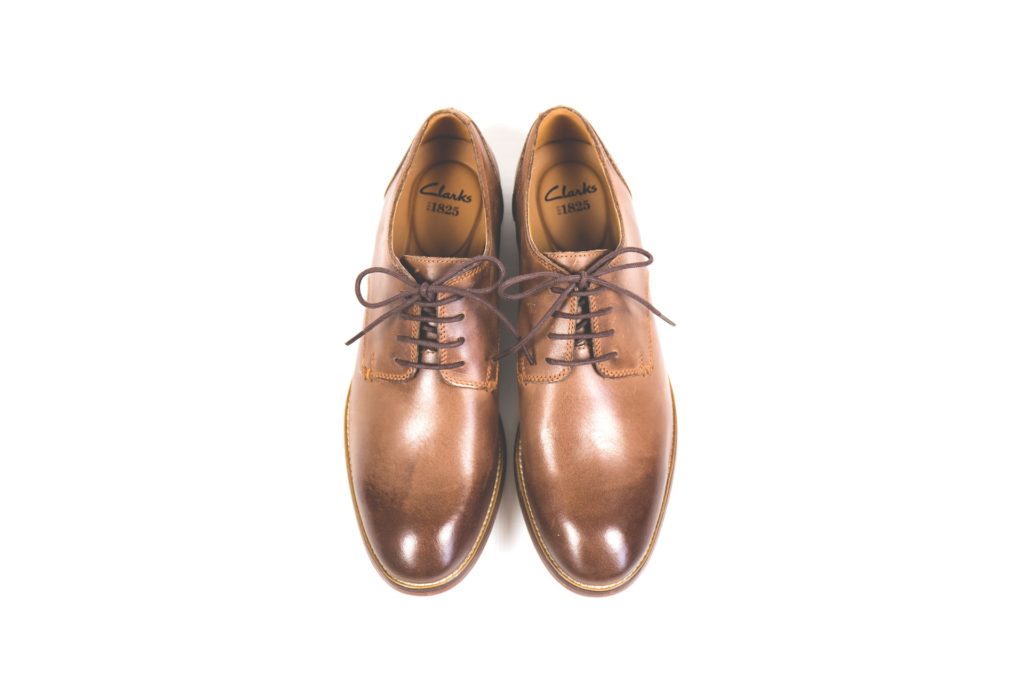
We’ll still stick to no / quarter-brogueing here though, to keep up with the formality levels
WEAR THEM WITH: a pair of nice dress pants for the office. If you want to add a jacket, think of a blazer rather than a full suit
DON’T WEAR THEM WITH: Should I repeat this? I think you already know the answer by now
5. Plain-toe / Cap toe Derbys (Half Brogueing is okay)
Wohoo! We’re slowly transitioning to the semi-formal side, y’all B-)
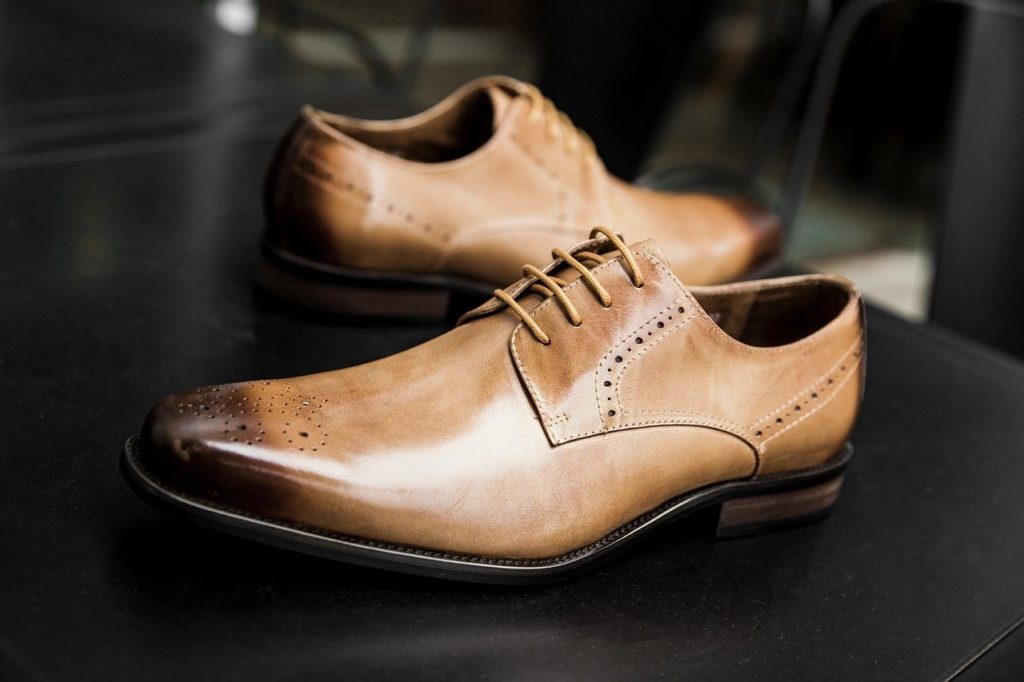
Derbys and half-brogues were always meant to be together, if you think about it. They look like a match made in shoe-heaven (I hope that’s a thing, please, oh please)
WEAR THEM WITH: Chinos to work, or with jeans in the lighter colours. Dress pants/ blazers may look good here as well
DON’T WEAR THEM WITH: Full suits/tuxedos. We’re moving away from the formal side, so super formal shoes will be a no-no from here
6. Single / Double Monk Strap shoes
If I ever tell you otherwise, call me a liar
‘Cause Monk shoes are my MOST FAVOURITE dress shoes EVER!
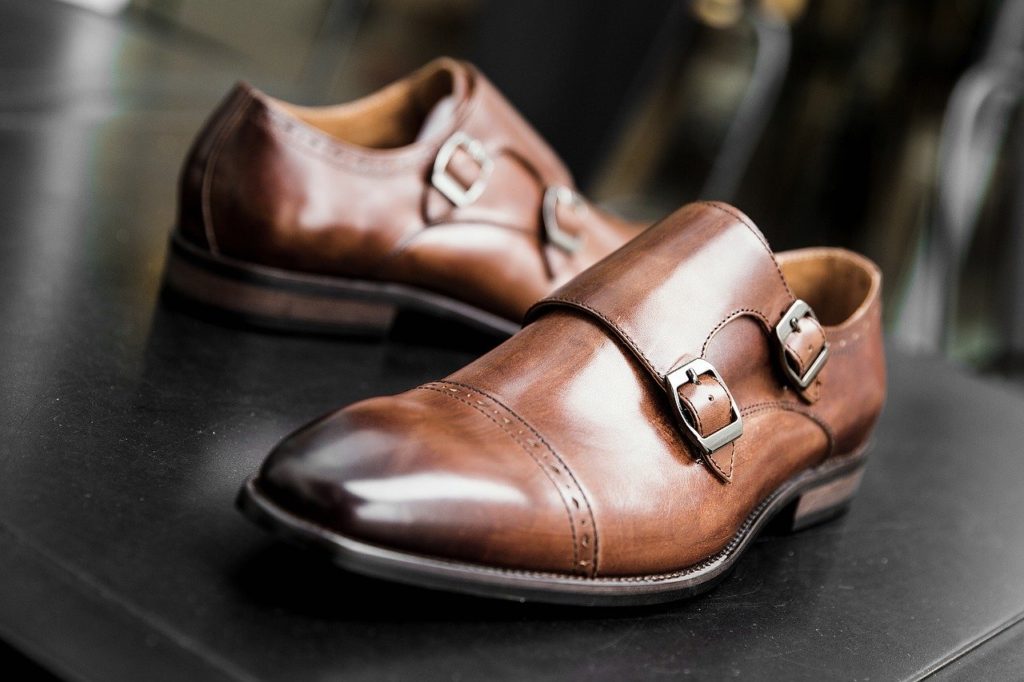
Professional and fun-sexy (no idea if that’s a word) at the same time. Perfect combination
No matter the number of straps, they always look amazing – neither is more formal than the other in my opinion
WEAR THEM WITH: Full suits (darker colours), Blazers, Chinos, Jeans. Are you still doubting their awesomeness?
DON’T WEAR THEM WITH: Tuxedos. Black-tie or white-tie events are definitely not the right occasions to show your edgier side
7. Chelsea boots
Chelsea boots are beautiful , and just as versatile as monk straps
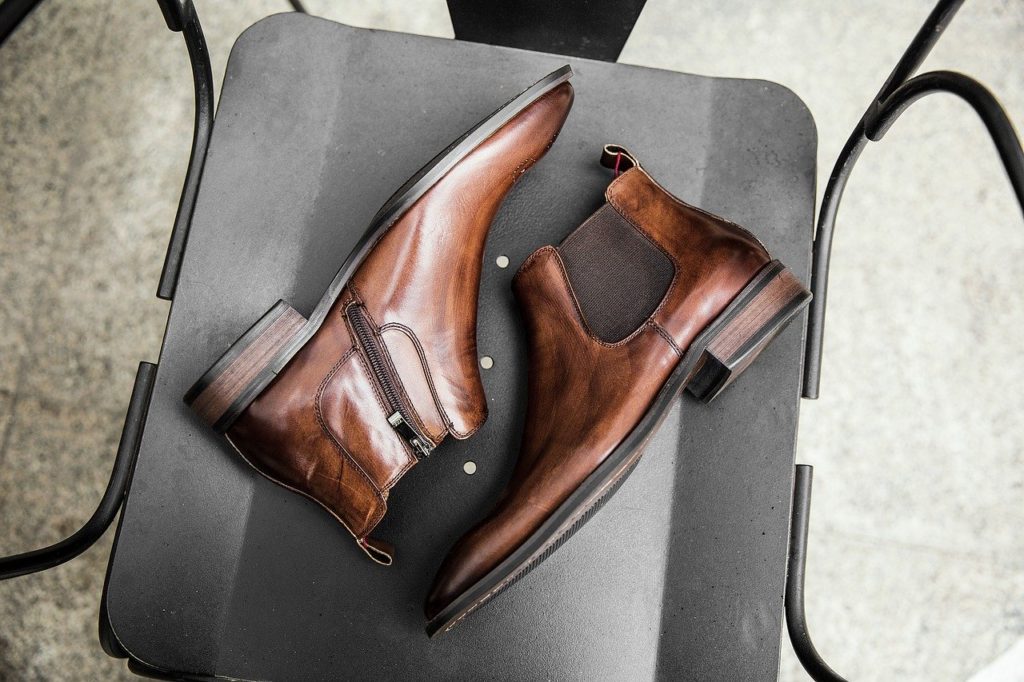
I wish I could tell you that these boots suit everyone, but sadly that’s not the case. They will favour the tall and lean guys more; when confused try them on before buying
WEAR THEM WITH: Blazers, Chinos. I especially like the look of Chelsea boots with denim
DON’T WEAR THEM WITH: Tuxedos and Full-suits
8. Wingtip Derbys in any colour / Spectator shoes
If monk strap shoes are my favourite, then wingtip derbys (in tan) are a close second. There isn’t anything not to like about these shoes
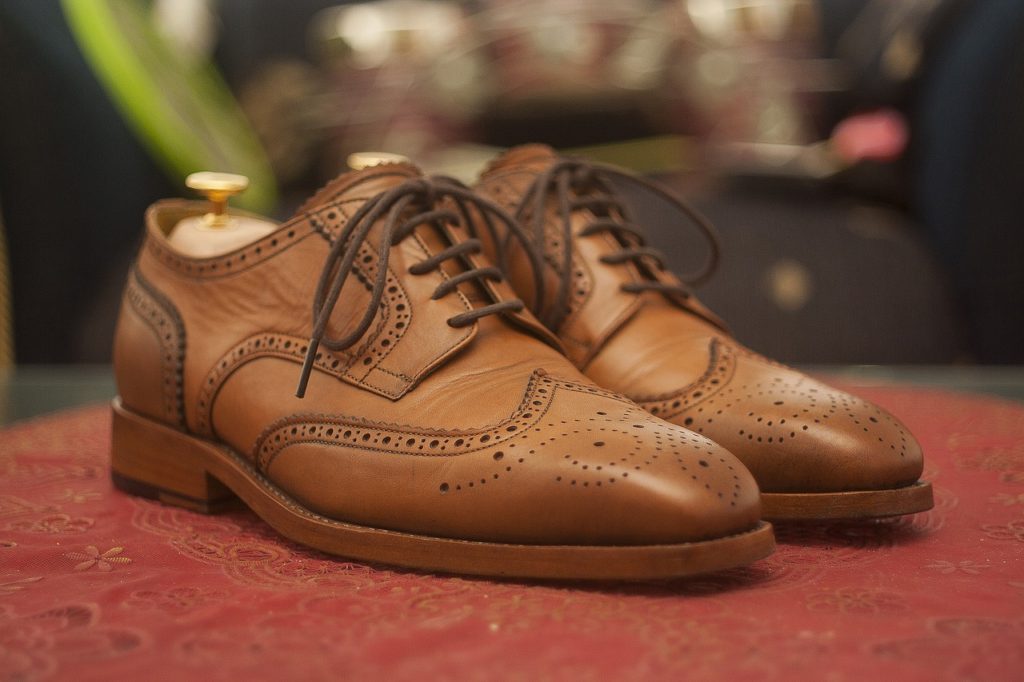
Spectator shoes are fun too, although might not cater to everyone’s tastes
WEAR THEM WITH: Jeans, Chinos and (sometimes) dress pants if the shoes are in dark colours. The combination of tan wingtips and blue denim looks lovely.
As these are perfectly semi-formal, you can wear them with sports jackets as well
DON’T WEAR THEM WITH: Tuxedos, Full-suits, Blazers
9. Penny Loafers
A classic will always remain a classic – and nothing else can describe Penny Loafers better.
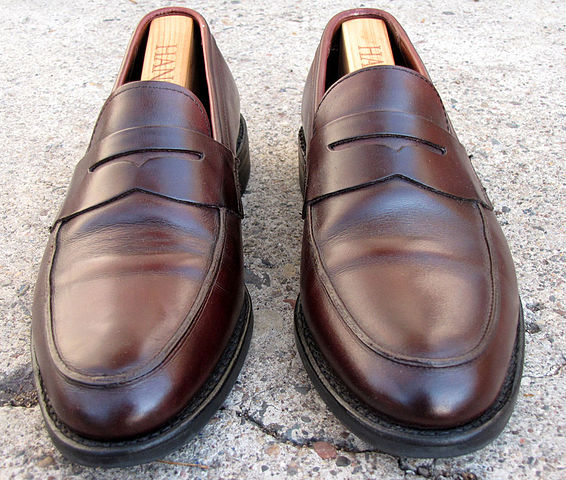
Source: Wikimedia Commons
The captain-cool of semi-formal shoes, you can match penny loafers with a wide variety of relaxed and dressed down outfits
WEAR THEM WITH: Summer Suits, Dress Pants, Jeans, Chinos and Shorts. When wearing loafers with shorts, sockless is the way to go. Also, make sure your dress pants are cut close and fit you well so as to provide a seamless appearance complimented only by Penny Loafers
DON’T WEAR THEM WITH: Tuxedos, Full-suits (dark coloured, mainly evening wear)
10. Tassel Loafers
The Penny Loafers’ close sibling, the tassel loafers are at the same level of formality. While the penny loafer design is traditional, the tassel loafers are a bit more fashion-forward

Photo by Robert Sheie on Flickr
They can still be interchangeably worn though i.e. the same outfits will work for both these kinds of loafers
WEAR THEM WITH: Summer Suits, Tailored and Close-Cut Dress Pants, Jeans, Chinos, and Shorts.
DON’T WEAR THEM WITH: Tuxedos, Full-suits (dark coloured, mainly evening wear)
Formal or Semi-Formal?
I know that there is a fine line of difference between formal and semi-formal shoes, but hopefully this article helped you understand them. When comparing two shoes: the basic principle is that the shoe with lesser details, thinner profile and darker colour will be more formal
Which shoes do you think are the most versatile for your daily use?
